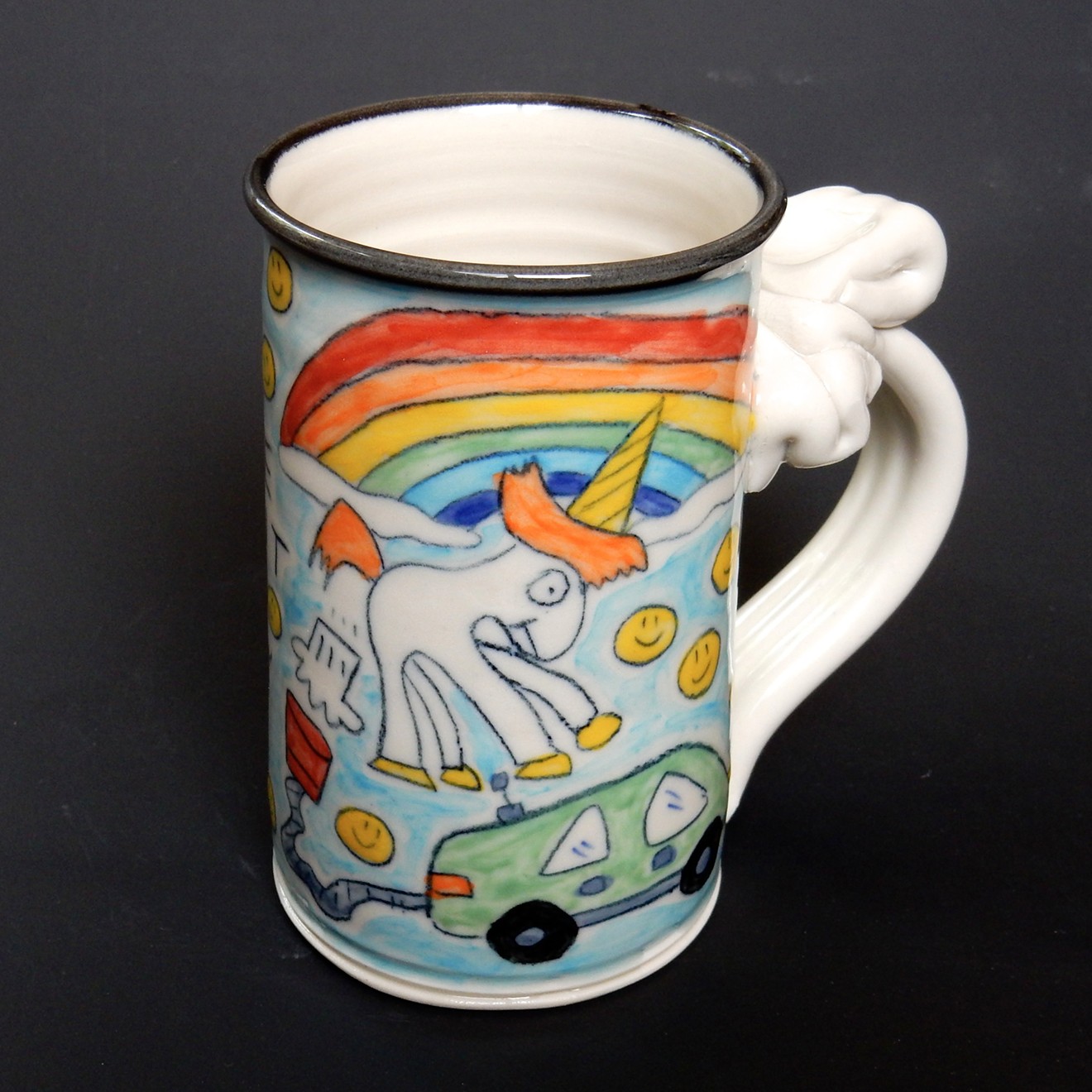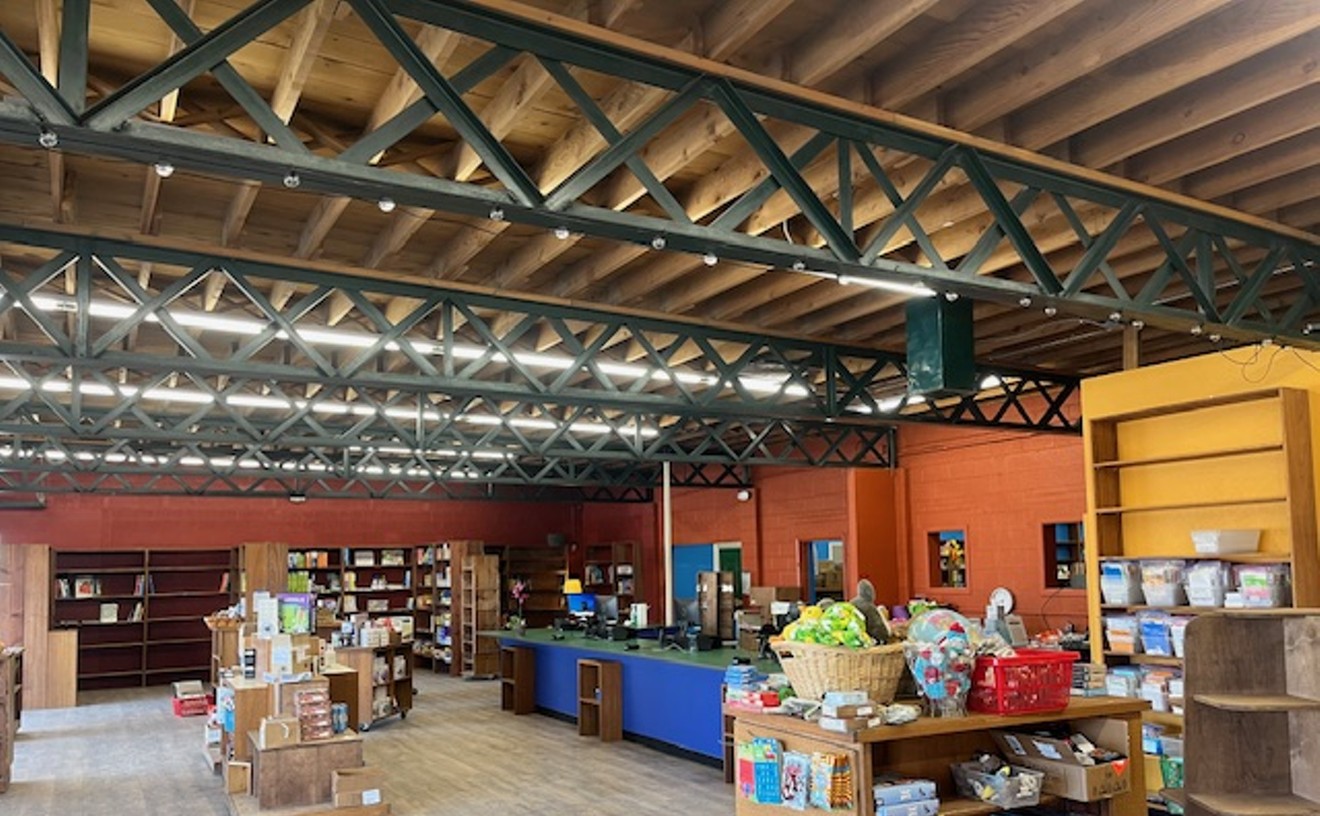After a copy of Edwards’s work wound up on the Tesla sketch pad as a clear part of the company's branding, Edwards's lawyer crafted an unbelievably gentle letter to Musk and Tesla...which went ignored until Lisa Prank’s tweet. Musk’s response, since deleted, was a sadly typical response to an artist's request for compensation: “He can sue for money if he wants, but that’s kinda lame.”
Is there any other profession where expecting to be paid for your work is considered “kinda lame”?
Sadly, Musk isn’t alone here: Billionaires, including Oprah, routinely ask artists for free labor, as does the art world itself. In fact, the entire art world runs on artists' free labor and the lie that exposure is a form of worthwhile gain. Galleries pay nothing for their inventory; artists have all the risk of time and money invested in work that may or may not sell, that they entrust to people who may or may not pay them.
And when you see an artist’s work in a museum or art center, a seemingly more elevated locale, there’s no guarantee that the artist has been paid in that instance, either: It’s commonplace for a curator to ask an artist to specifically make work for an exhibition with no payment offered, and the honor is supposed to be enough, no matter how much time or money it takes to create that work. In fact, in the Whitney Biennial — one of the premier achievements an American artist can have on a resume: inclusion at a venerated New York institution, the Whitney Museum of American Art — most of the artists are not paid, with the honor of inclusion being considered payment enough.
Which is why WAGE — Working Artists and the Greater Economy — was founded in 2008: to offer certification to organizations that followed its payment guidelines and promised to pay artists fairly. So far, 56 institutions have signed on and become WAGE-certified, including the Art Student’s League of Denver and Black Cube (though notably, none of Colorado’s other museums or art centers). A survey conducted in 2012 by the activist group of 1,000 artists in New York revealed that 58 percent of them received no compensation whatsoever when presenting their work at local nonprofits, not even compensation for delivery expenses. By and large, the majority of institutions in the United States simply do not have a line item for “artist payment” in their budgets, no matter how large those budgets are. Never mind that many of these institutions wouldn’t exist without artists; no one suggests that the administrators go unpaid, right?
Many people have the mistaken idea that artists make millions because they hear of outrageous auction totals and little more about the art world on the news. But not only are those auction totals generally for dead artists, they also are only making money for the collector and the auction house; outside of California, which enacted the California Resale Royalties Act, there are no “royalties” that return to artists for their work. So even if a living artist’s work sells for a seemingly outrageous amount at auction, chances are the artist didn’t see a dime of that profit and only received the much lower price for which the work originally sold.

“Fool’s Gold,” by Lauri Lynnxe Murphy, used found materials to comment on Denver's current construction boom.
Jay Clawson
We frequently hear that “Artists do it for love! They shouldn’t want money!” No matter how much “love” you have for what you do, you need to put food on the table and keep an increasingly expensive roof over your head. This argument is used as an excuse to keep teachers poor, too. In fact, there’s a direct inverse relationship between how meaningful work is and how much it pays, thanks to the grotesque exploitation of people’s passion and goodwill.
Here's another one we hear: “Artists just get to have fun all day — would a gamer or a mountain biker expect to be paid for their hobby?” But much of the work of being an artist is just that: work. Artists are expected to be “creative entrepreneurs” now — that second word is about business, not fun. Many successful artists spend less than 50 percent of their work time actually making art; artists must wear many hats in their practice — writing proposals and statements, doing bookkeeping, handling client relations, organizing crating and shipping, and dealing with a whole host of other not-very-fun activities that support a career and need to get done. Not to mention sweeping the floor and restocking supplies: Few artists have employees to help with the drudgery.“Artists just get to have fun all day — would a gamer or a mountain biker expect to be paid for their hobby?”
tweet this
Not to state the obvious, but art supplies, musical equipment and the tools of any creative trade require a hefty commitment. As does the time needed to become good enough for anyone to pay you to have “fun” creating — that vaunted 10,000 hours cited by Malcolm Gladwell. Add to that the expense of a college degree, a studio (with Denver’s crazy rents, often an impossibility for many artists) and the myriad fees that artists are charged to even have their work considered for many opportunities, and it’s easy to see how art could become a vocation only wealthy elites can afford.
Speaking of the wealthy elites, they are typically the ones profiting from an artist’s labor: Money and celebrity power the art world, not the artists on whose backs it is built. This is true for gentrification, too: Although artists are frequently blamed for changing neighborhoods, we are no more the beneficiaries of those changes than the long-term residents with whom we are displaced. In the midst of being displaced, we become useful artwashing for developers to market “hipness,” our work covering walls of neighborhoods we formerly inhabited, attracting young, wealthy types who desperately want to be seen as cool at any cost and fattening developer wallets as our city is remade into a luxury brand.
But of course, artists should be glad to be paid with “exposure,” right? This is the logic levied on us again and again, by everything from startup companies to restaurants seeking decor, offering the magic of eyeballs in exchange for our labor. In the age of the Internet, this notion becomes even more laughable, as it also exposes us to more potential theft. One of the biggest scams in the exposure game comes in the form of charity auctions, to which artists are routinely asked to contribute. Though the well-heeled attendees might become potential clients, their names are almost never shared with the donating artists, who are typically kept away from the swanky event. In fact, artists don’t even get a tax write-off from this arrangement. A collector could donate a purchased artwork and write off the full value on their taxes as a donation, but artists are only allowed to deduct the materials for the gift — not even their labor.
And then there are the myriad “contests” and offers to “work on spec” — in other words, to put in several hours creating something that someone may or may not want and may or may not pay for. Everyone from Eminem and John Oates to British grocery chain Sainsbury’s offers this dubious opportunity for exploitation, wherein one “lucky” winner is chosen out of hundreds of hardworking hopefuls for an undervalued prize package and that magical “exposure.” These contests devalue the entire profession while making artists waste their time creating things that may never see the light of day, and may even be owned by the company running the contest.
There are many ways to support the artists who are a part of your local economy beyond perusing the offerings at art festivals and sipping wine at galleries on First Friday. Artists can provide a variety of services outside of decorating your walls. For example, the next time your company decides to use a stock illustration or photo, think of how you could spend the same amount of money supporting a member of your community and in exchange create unique branding that will set your company apart. Many artists have Patreon accounts so that their fans can contribute to the support of their work, and nearly all artists and galleries are willing to take commissions or allow people to pay for artwork on an installment plan. Culture is what shapes a city, and in a city that is losing its creatives at an alarming rate, that little bit of support could make the difference between someone simply surviving and someone thriving.
Can you think of a single other profession where you assume the person providing the service need not be paid? Would you expect your mechanic to fix your car for “love,” even if that was likely the motivation for the mechanic to choose that career path? Would you do your job for free, no matter what it is? And if so, do you think your landlord would accept "exposure" as payment?
The world needs art, more than ever before. If you doubt the power of art, imagine what the world would look like without it.
Now pay up, Elon.














